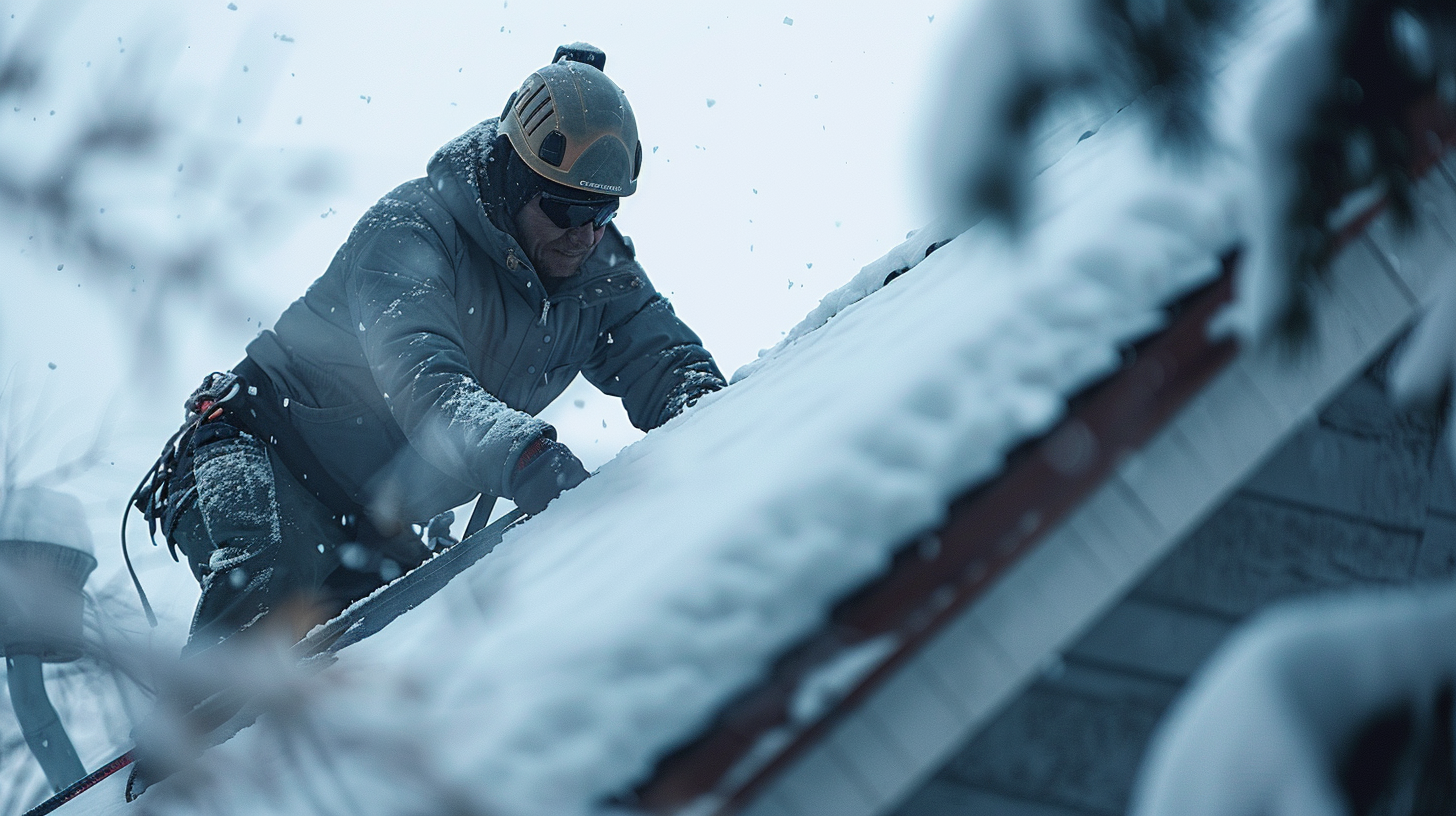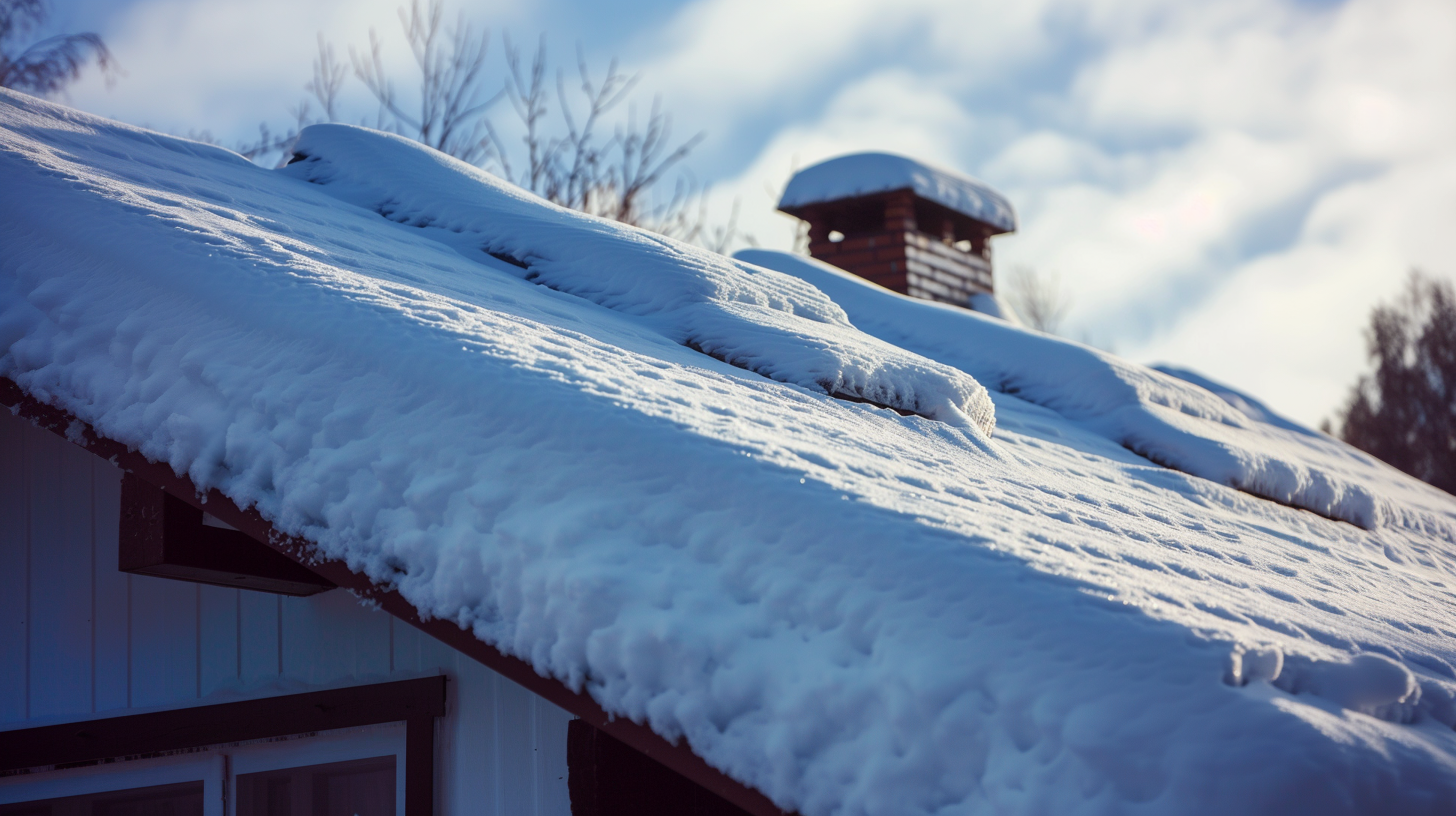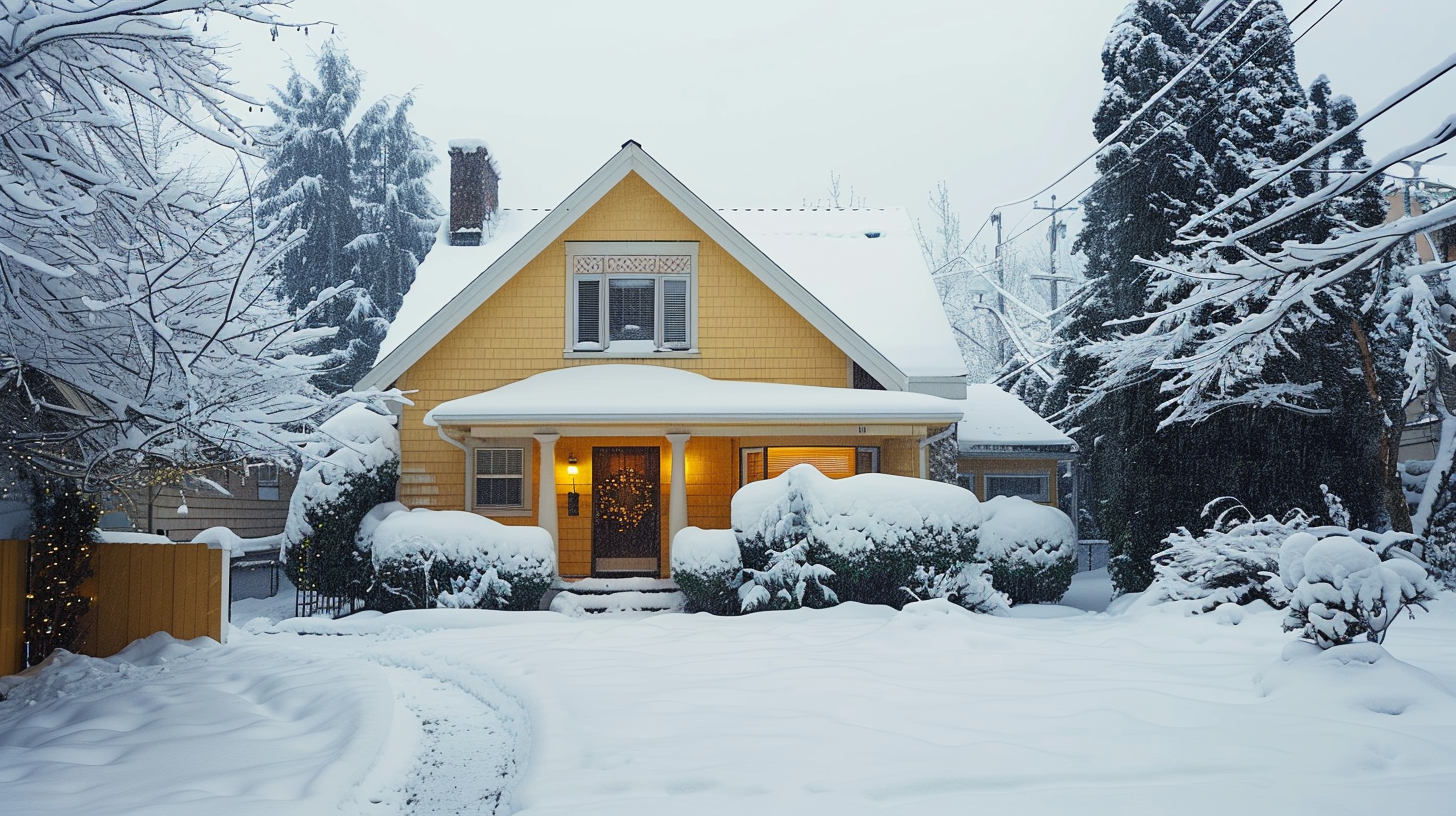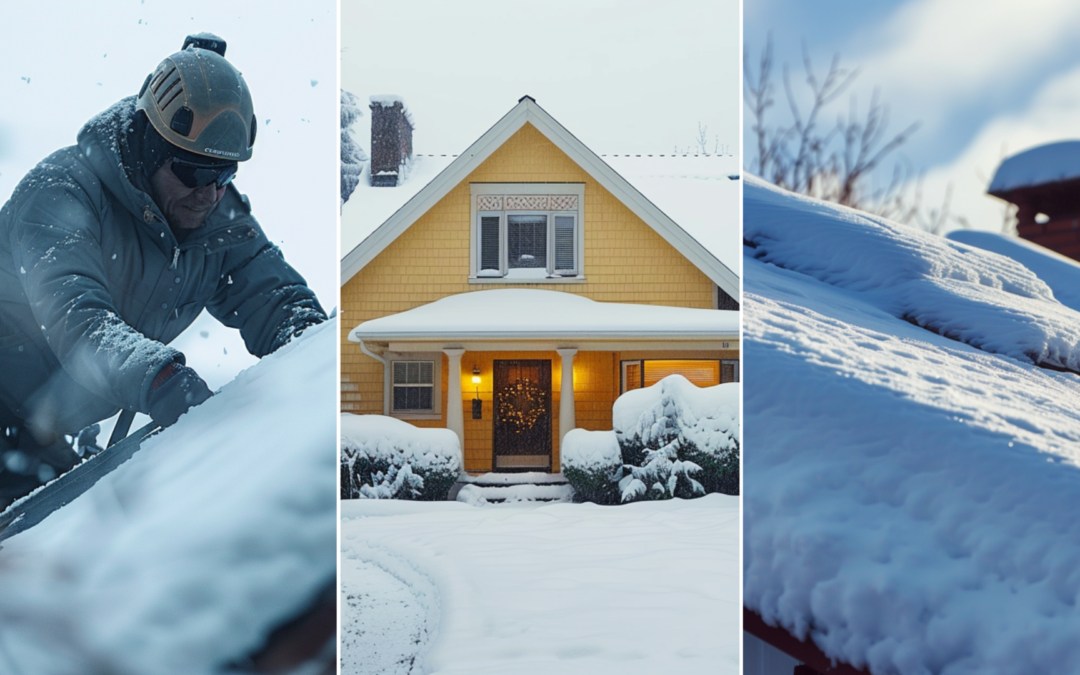Definition of Snow Load
Importance of Snow Load Regulations
Snow load regulations are of utmost importance in areas prone to heavy snowfall. These regulations ensure the structural integrity of buildings by providing specific guidelines that must be followed during construction or renovations. These guidelines are based on extensive studies and data analysis, considering the weight of wet and dry snow and their impact on different structures. By adhering to these regulations and considering wind loads, builders can ensure that the roofs and other load-bearing elements of a building can withstand the weight of snow, preventing collapses and other structural failures. Consulting with a professional engineer and coordinating with the building department can help prevent the overestimation of snow loads and ensure that structures are built to withstand the unique challenges posed by heavy snowfall.
Building Codes and Regulations
It is essential to consider and understand the various building codes and regulations when planning renovations or constructing new buildings, including basement floor plans and connection details. One specific code that plays a crucial role in design and construction is snow load regulations. These regulations determine the minimum and maximum amount of snow weight a building can safely withstand, including accumulation of packed snow and heavy snow, ensuring the structure’s stability and safety during winter weather conditions. The ground snow load map and the application for a building permit are often used to determine these values based on geographic location. By familiarizing oneself with snow load regulations and avoiding underestimation of snow loads, architects, contractors, and homeowners can make informed decisions, assess risks, and implement necessary modifications to ensure the longevity and durability of their buildings. This understanding is vital for any construction project to ensure compliance with local regulations, reduce potential damage, and create resilient and structurally sound buildings.

Snow Load Regulations - Role of Building Codes - Sky Roofing Construction & Remodeling
Role of Building Codes in Determining Snow Loads
Building codes are crucial in determining snow loads and guiding designers in accommodating these loads on roofs and decks. They outline specific design requirements to ensure the structural integrity of buildings in regions prone to heavy snowfall. The International Residential Code (IRC) offers design guidance and requirements for roofs and decks, ensuring they can withstand the weight of accumulated snow. Additionally, building codes consider the concept of ground snow load, which varies based on location, wind direction, wind speed, and weather conditions. By considering these factors, designers can effectively calculate the maximum snow load a structure may experience, allowing for appropriate design and construction measures, whether for conventional or more specialized projects, to be implemented for safety and longevity.
Importance of Adhering to Regulations for Safety
Adhering to safety regulations is of utmost importance as it ensures the well-being and protection of individuals within a workplace. Comply with these regulations to avoid risks and hazards resulting in serious accidents or injuries. Non-compliance also carries significant legal and financial consequences for organizations, including penalties, fines, and legal actions. Adhering to safety regulations mitigates these risks and promotes employee well-being by providing a safe and secure working environment. By understanding and following snow load regulations before renovations, companies can ensure the safety of their employees and avoid any legal issues that may arise from non-compliance. Ultimately, prioritizing safety through compliance with regulations protects the organization’s physical and financial health while positively impacting employee morale and productivity.
Design Snow Loads
Designing snow loads plays a crucial role in building regulations, ensuring the safety and stability of structures in areas prone to snowfall. These regulations are implemented to determine the maximum weight a building can safely support from snow accumulation. Understanding these snow load regulations is essential, especially for those planning renovations or construction in regions with significant snowfall. By adhering to these regulations, homeowners and builders can avoid potential damage, collapse, and injury caused by excessive snow loading. A comprehensive knowledge of snow load regulations enables individuals to make informed decisions about building design, materials, roof structural considerations, and structural modifications. Specific roof designs, such as gable roofs, may require particular attention to the buildup of snow and the impact of additional snow loads.

Snow Load Regulations - Factors Influencing Design Snow Loads - Sky Roofing Construction & Remodeling
Factors Influencing Design Snow Loads
Factors influencing design snow loads include elevation, cumulative snow amounts, and requirements. Design snow loads are calculated based on the potential weight of snow, which can vary depending on the moisture content of the snow. Higher elevations generally have higher design snow loads due to increased snowfall accumulation. Snow load requirements, determined by local and national building codes, are crucial in determining the correct roof snow load. Understanding these factors is essential for renovations and any building project, as it allows builders and architects to accurately assess the structural integrity of a building and design it to withstand the potential weight of snow. Additionally, considering the building dimension layout is vital in supporting the anticipated snow loads. By being aware of the factors that influence the design of snow loads, individuals can take necessary precautions and ensure the safety and longevity of their buildings.
Calculation Methods for Determining Snow Loads
Understanding snow load regulations is essential before any renovation project. Calculation methods play a crucial role in determining snow loads on roofs. Roof structure and type, along with factors like water content of snow and weight differentials, must be considered. Specific steps must be followed to accurately measure snow’s moisture content and determine its weight factor. By thoroughly understanding these calculation methods and considering all relevant factors, including the overall building structure and building systems, renovations can be planned and executed safely and efficiently. Additionally, referring to a building permit guide ensures compliance with local regulations and guidelines.

Snow Load Regulations - Ground Snow Load - Sky Roofing Construction & Remodeling
Ground Snow Load
Understanding ground snow load regulations is essential before renovating or construction projects in snowy regions. Ground snow load refers to the weight of measurable snow accumulating on the ground at a specific location. Snow load regulations ensure buildings’ safety and integrity by determining the maximum load a roof or structure can safely bear. By familiarizing oneself with these regulations and ground snow load requirements, property owners and contractors can make informed decisions regarding design, materials, structural plans, construction drawings, and construction methods. This knowledge helps avoid risks such as roof collapses or structural failures due to excessive snow accumulation.
Moreover, understanding these regulations allows homeowners and builders to plan and prepare for snow events, including implementing appropriate snow removal strategies. Ensuring that structural plans are complete and accurate, rather than relying on incomplete plans, is crucial for the safety and success of a building project. Additionally, considering the cost of construction and the specifics of concrete construction can further influence the design and execution. Proper planning before the commencement of construction, including detailed construction drawings, is critical to a successful project.
Definition of Ground Snow Load
The ground snow load is crucial in determining the design of snow loads for buildings and structures. It refers to the weight of the snow that settles on the ground, directly impacting the load that roofs and other building parts must bear during snowy conditions. Understanding the ground snow load is essential for architects, engineers, and construction professionals to ensure that buildings are designed and constructed to withstand the potential weight of accumulated snow on roofs. In Montana, for example, there are minimum requirements for designing roof snow loads mandated by law, which consider the ground snow load. The moisture content of snow may vary, affecting its weight and, thus, the design considerations. Professionals can consult sources such as local government agencies, engineering associations, and weather authorities to obtain ground snow load information. Additionally, managing the shedding of snow from roofs and ensuring it does not impact adjacent buildings is essential for overall building safety.
Impact on Roof Design and Construction
The impact of snow load on roof design and construction practices is significant. Snow load refers to the weight of snow that accumulates on a roof, significantly impacting the structural integrity and safety of a building. Architects and engineers must consider roof snow loading when designing and constructing roofs to prevent structural failures or collapses. Key considerations include understanding the geographic location, climate, and basic wind speed design of the area where the building is being constructed, as these factors will dictate the expected snow load. Calculations must determine the required load capacity of the roof, considering colder temperatures, annual temperatures, ambient air temperatures, and attic temperatures. Appropriate materials and construction techniques must be used to ensure the roof can bear the weight of snow. Additionally, regular inspections and maintenance are crucial to monitor the roof’s condition and promptly address any issues that may arise. By understanding and following snow load regulations, architects and engineers can ensure the longevity and safety of buildings in areas prone to heavy snowfall.
Roof Snow Load
One often overlooked aspect of renovations and structural changes to buildings is the importance of understanding roof snow load regulations. Snow load regulations are guidelines set by local building codes to ensure that roofs, including ceiling panels and ceiling planes, can bear the weight of snow, preventing structural damage and collapse. By familiarizing yourself with these regulations, including balanced ventilation systems and commercial properties, you can make informed decisions about renovations, ensuring the safety and longevity of the building. Whether you are a homeowner planning renovations or a contractor working on a project, knowing the snow load regulations specific to your area, including connection and complete details, is crucial for a successful and safe construction process.
Definition of Roof Snow Load
Roof snow load refers to the weight of snow accumulating on a roof. It is calculated by considering various factors, such as the minimum design roof snow load set by local building codes and the range of ground snow load for roofs in different communities and zones. Understanding these regulations is crucial before renovations as it helps ensure that roofs are constructed to withstand the weight of snow. Factors such as roof structure and type, roof coverings, flat roof snow load, and the water content of snow also have to be considered in the calculation of roof snow load. For example, the ground snow load in Oregon can range from 10 to 100 pounds per square foot, depending on the location. Additionally, foreseeable snow conditions, such as a foot of snow, can impact the calculations. Failing to understand and account for roof snow loading regulations can result in structural damage to roofs and potential safety hazards. Therefore, individuals must educate themselves about these regulations to avoid such problems and make informed decisions during renovations.
Factors Affecting Roof Snow Load
Factors affecting roof snow load include:
- The roof structure.
- Type of roof.
- Insulated panel construction.
- Wood-framed construction.
- The number and type of roof coverings.
- Asymmetrical snow loading.
The weight differential factors can vary depending on these elements. The type of roofing material used and the number of layers can also impact the snow load. Another critical factor is the water content of snow and ice, which affects roof stability. Snow with a higher water content is heavier and can stress the roof more. Measuring the moisture content, including in regions with ground snow, is crucial to determine the weight factor of snow. Moisture measurement techniques provide valuable data on snow weight and potential strain on the roof structure. By understanding these factors and conducting proper measurements, homeowners and contractors can ensure their roofs withstand heavy snow loads, including snow surcharge, and carry out renovations safely. A valid permit from the code official is crucial to avoid any potential building failure.
Ensuring Safety and Compliance: Sky Roofing Construction & Remodeling’s Guide to Snow Load Regulations
Understanding snow load regulations is crucial for ensuring the safety and longevity of your building in regions prone to heavy snowfall. Whether planning renovations or constructing a new building, compliance with these regulations is paramount. For expert guidance on snow load considerations and to schedule a roofing consultation, contact Sky Roofing Construction & Remodeling (https://skyroofingconstructiontx.com) at (210) 942-9797. Ensure your project meets safety standards and withstands the challenges of snow accumulation with professional assistance.
Tasha Davis is a knowledgeable contributor to Sky Roofing Construction & Remodeling, with a specialty in roofing project management and customer service excellence. Tasha’s experience in overseeing large-scale roofing projects ensures that her writing is both practical and customer-focused, providing homeowners with tips on navigating the roofing process smoothly and ensuring their satisfaction from start to finish.

